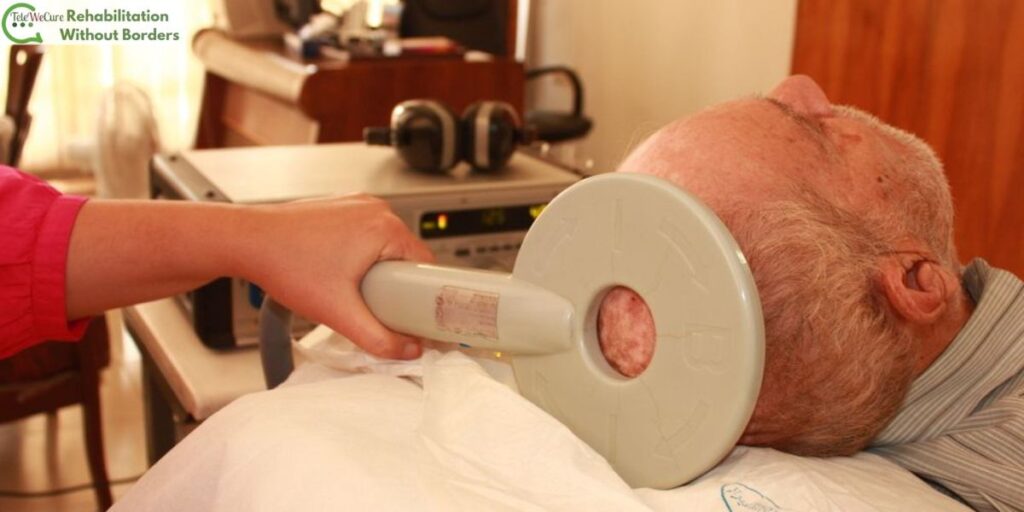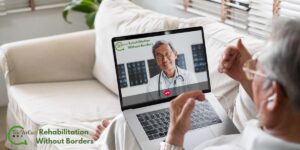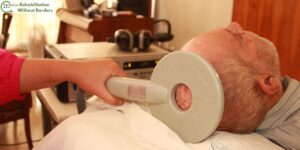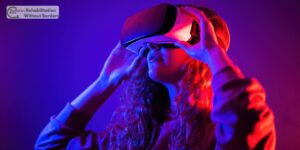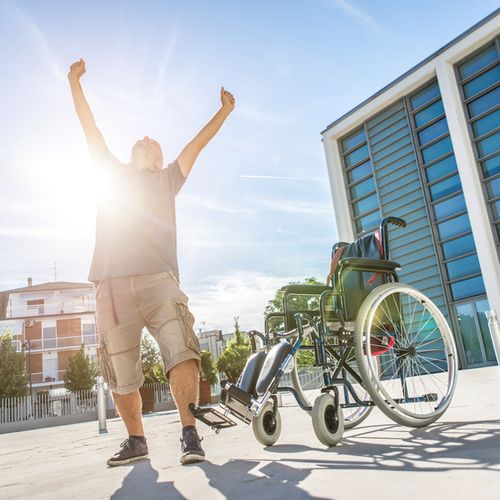Introduction: The Long Road to Recovery
A stroke, often a life-altering event, occurs when a part of the brain is deprived of blood flow. This sudden interruption can lead to a variety of impairments, including physical weakness, speech difficulties, and cognitive challenges. The journey to recovery is often a marathon, not a sprint. Fortunately, the field of rehabilitation is constantly evolving, with new technologies emerging to complement traditional therapies. Among the most promising of these is Repetitive Transcranial Magnetic Stimulation (rTMS).
What is Repetitive Transcranial Magnetic Stimulation (rTMS)?
Repetitive Transcranial Magnetic Stimulation, or rTMS, is a non-invasive procedure that uses magnetic fields to stimulate nerve cells (neurons) in the brain. Think of it as a very targeted, high-tech massage for your brain cells. During a session, a coil is placed on the scalp, which generates brief magnetic pulses. These pulses pass painlessly through the skull and can either excite or inhibit brain activity in specific regions. The magic of rTMS lies in its ability to “prime” the brain for change, making it more receptive to learning and reorganization.
The Brain’s Masterpiece: Neuroplasticity
Our brain is an incredible organ. When a stroke damages one area, it has an innate ability to reorganize itself and create new neural pathways—a phenomenon known as neuroplasticity. This is the brain’s way of saying, “Okay, that road is closed. Let’s build a new one!” However, this process can be slow and inefficient. rTMS acts as a catalyst, helping the brain’s “construction crew” work faster and more effectively. By either exciting the damaged hemisphere or calming the overactive healthy one, rTMS helps restore the delicate balance between the two sides of the brain, encouraging them to work in harmony.
How Does rTMS Help in Stroke Rehabilitation?
The effects of rTMS in stroke recovery are being studied extensively, and the results are encouraging. By targeting different areas of the brain, rTMS can help with a variety of post-stroke challenges:
- Motor Recovery: This is perhaps the most well-researched application of rTMS in stroke. By stimulating the motor cortex, rTMS can significantly improve motor function in affected limbs. For a person struggling to regain movement in their arm or hand, rTMS can be a powerful tool to unlock their brain’s potential for recovery.
- Aphasia (Speech and Language Problems): Imagine knowing exactly what you want to say but being unable to form the words. This is the reality for many stroke survivors with aphasia. rTMS can be applied to language centers in the brain to help rewire those connections, making it easier to speak and comprehend.
- Cognitive Function: A stroke can cause a foggy brain, affecting memory, attention, and problem-solving. rTMS has shown promise in enhancing these cognitive functions, helping patients think more clearly and perform daily tasks with greater ease.
- Swallowing Difficulties (Dysphagia): A stroke can weaken the muscles used for swallowing, leading to a high risk of choking. rTMS can target the brain regions that control these muscles, helping to restore safe and effective swallowing.
- Post-Stroke Depression: It’s no joke—recovering from a stroke is mentally and emotionally taxing. The helplessness and frustration can lead to depression. rTMS is already an FDA-approved treatment for major depression, and it can be highly effective in improving mood and overall well-being in stroke survivors.
The Perfect Match: Telerehabilitation and rTMS
While rTMS holds incredible promise, access to the necessary equipment and specialists can be a significant barrier. This is where the magic of telerehabilitation comes in. Telerehabilitation uses technology to deliver rehabilitation services remotely, connecting patients with therapists from the comfort of their own homes. It’s like having a top-tier rehab clinic right in your living room, without the hassle of a commute.
Telerehabilitation perfectly complements rTMS by ensuring that the gains made during in-clinic stimulation sessions are maintained and built upon at home. Through video conferencing, online exercise programs, and remote monitoring, patients can engage in consistent, high-intensity therapy. This is crucial because recovery from stroke requires relentless repetition. Telerehabilitation makes it easier for patients to practice exercises as often as needed, helping to solidify the new neural pathways that rTMS has helped to create. Our company, TeleWeCure, is a pioneer platform in this space. We provide a comprehensive telerehabilitation solution that bridges the gap between clinic and home, offering a personalized and convenient path to recovery for stroke survivors. We are committed to ensuring that every person, regardless of their location, has access to the expert care they need to regain their independence.
The Future of Stroke Rehabilitation
The combination of advanced brain stimulation techniques like rTMS and the accessibility of telerehabilitation is revolutionizing stroke care. It allows for a more personalized and continuous approach to recovery, moving beyond the traditional model of a few in-clinic sessions per week. As a scientific writer and healthcare expert, I can tell you that this is not just a trend—it’s the future. While the journey is challenging, these innovations are providing new hope and tangible results for stroke survivors and their families.
Summary of Key Benefits
- Non-Invasive and Safe: rTMS is a well-tolerated procedure with minimal side effects.
- Enhanced Neuroplasticity: It helps the brain rewire itself more effectively after an injury.
- Broad Applications: It can improve motor function, speech, cognition, and even mood.
- Improved Accessibility: When combined with telerehabilitation, it allows for consistent therapy, regardless of location.
Conclusion
Repetitive Transcranial Magnetic Stimulation (rTMS) represents a significant leap forward in the treatment of stroke. By directly modulating brain activity, it can accelerate and enhance the natural recovery process. When this powerful tool is combined with the convenience and continuity of telerehabilitation, as offered by a platform like TeleWeCure, we can truly unlock a new era of care for stroke survivors. Recovery is a journey, and with these innovative approaches, we’re giving patients a better map and a faster vehicle to get them where they need to go.

